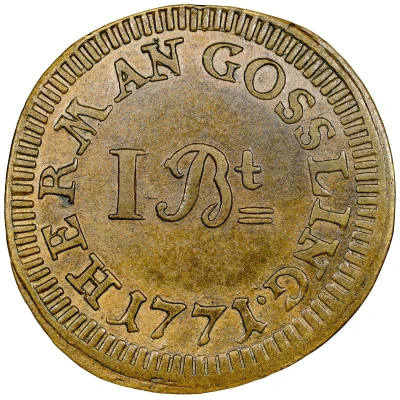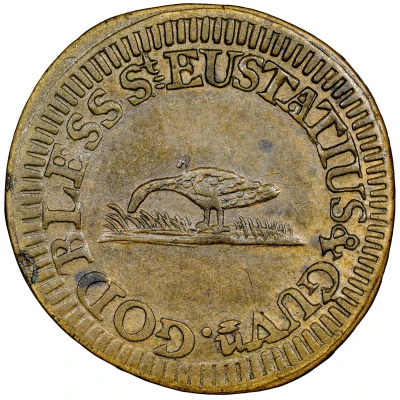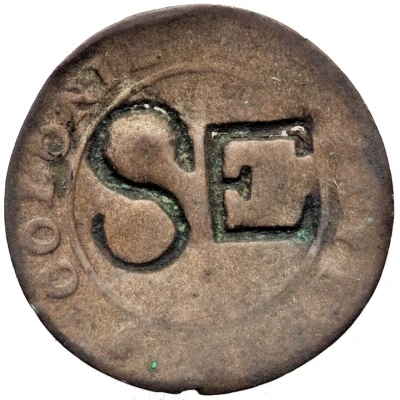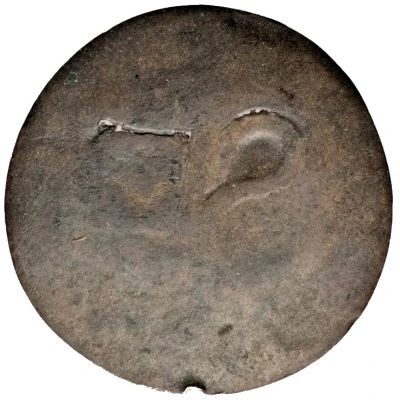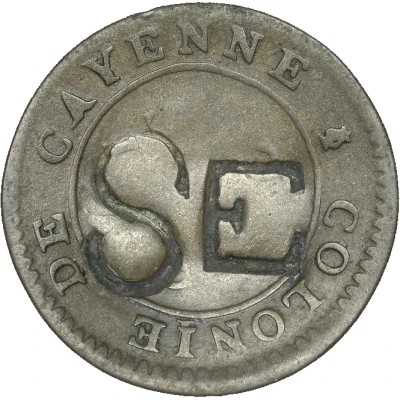
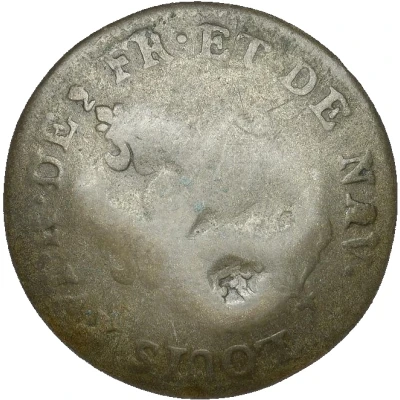

© Dix Noonan Webb
1 Stuiver "Cayenne-stuiver" Countermark C12 incuse - French Occupation ND
1797 year| Billon | 1.8 g | 23 mm |
| Issuer | Saint Eustatius (Netherlands Antilles) |
|---|---|
| Type | Standard circulation coin |
| Year | 1797 |
| Value | 1 Stuiver |
| Composition | Billon |
| Weight | 1.8 g |
| Diameter | 23 mm |
| Thickness | 1 mm |
| Shape | Round |
| Technique | Milled, Countermarked |
| Orientation | Coin alignment ↑↓ |
| Demonetized | Yes |
| Updated | 2024-10-06 |
| Numista | N#106234 |
|---|---|
| Rarity index | 97% |
Reverse
Reverse of the 2 sous coin with the excuse of the countermark
Edge
Plain
Comment
The 'cayenne stuiver' was a 2 sous coin minted in the West Indies (Colonie de Cayenne) by the French government, that was used on a lot of non-French islands in the region (including Saint Martin, Saint Bartholomew etc) as well.According to Publication 15-12-1797 the 'Cayenne Stuivers' and similar coins, were countermarked with the letters 'SE'. Smith Pierre dit Flamand was sworn in to make the stamps. On 23-1-1798 a new publication warned for counterfeits and stating that only the old marked, old plain, old Danish and Dutch Stuivers remained of value. Later, in 1809, these coins were marked again, this time with a 'P'.
Interesting fact
The "Cayenne-stuiver" coin from Saint Eustatius (Netherlands Antilles) is interesting because it was issued during the French occupation of the island in 1797, and it features a unique countermark (C12 incuse) that was applied by the French authorities to validate the coin's authenticity. This coin is a rare example of a coin that was issued during a specific historical event, and it serves as a reminder of the complex history of the island and its various occupations.
